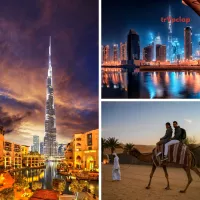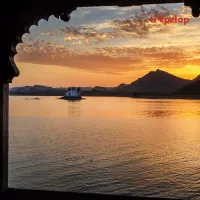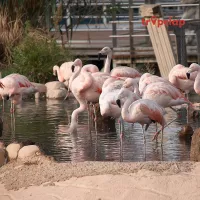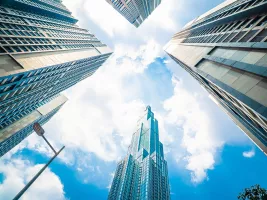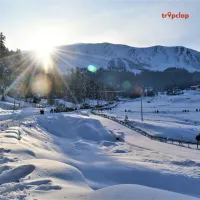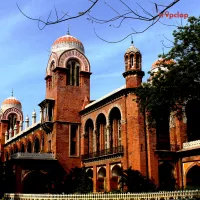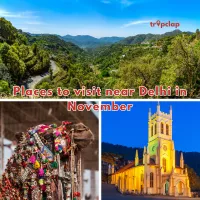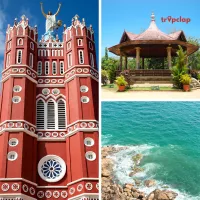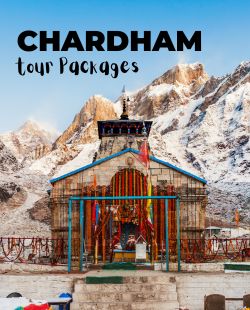Top 10 Things to Do in Bhubaneswar
Bhubaneswar, a city in the Indian state of Odisha, is known as the "Temple City of India" due to the abundance of Hindu temples there. It is - Tripclap
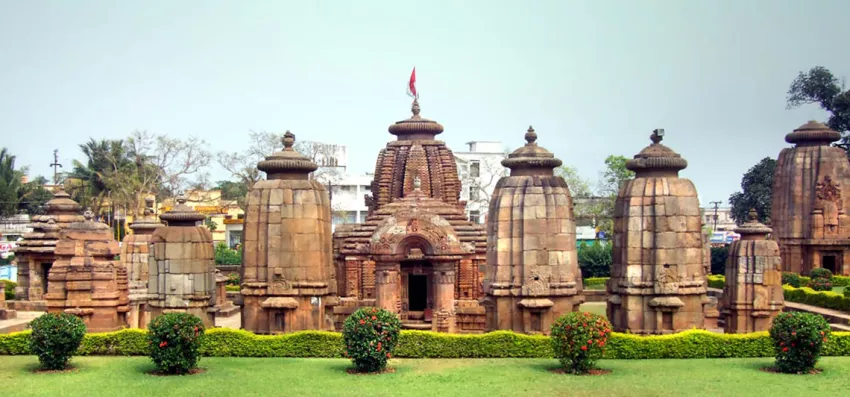
Bhubaneswar, a city in the Indian state of Odisha, is known as the "Temple City of India" due to the abundance of Hindu temples there. It is situated at the mouth of the Mahanadi River on the Bay of Bengal. In modern times, Odisha is a significant centre of economic and cultural significance in Eastern India.
Bhubaneswar was formerly referred to as "Kalinga Nagari." It served as the seat of the ancient Kalinga dynasty, one of India's four great empires. The Maurya dynasty eventually defeated the Kalinga dynasty. The Ganga dynasty, the Shunga dynasty, the Gupta dynasty, the Pala dynasty, and the Sena dynasty later ruled the city. The city was taken over by the Muslim tyrant Muhammad bin Bakhtiyar Khilji in the 12th century. The Mughal emperor Akbar overthrew the city in the sixteenth century. In the 18th century, the city was conquered by the Maratha ruler Mahadji Shinde. The British East India Company seized control of the city at the beginning of the 19th century. In the year 1803, the city became the administrative centre of the British province of Orissa. Later, in 1950, the town adopted the name "Bhubaneswar."
In 1946, German architect Otto Königsberger created the modern city.
The city has a population of more than 1.5 million inhabitants. Additionally, the city is well-known for its traditional handicrafts, especially its silver filigree ware and Odissi dance. Without further ado, let's see some of the best things to do in Bhubaneswar.
Table of Content
- Pay your homage at the Lingaraj temple
- Explore the Udayagiri and Khandagiri Caves
- Get spiritual at Mukteswara Temple
- Spend a day at the Nandankanan Zoological Park
- Glorify the popular Parsurameswara Temple
- Explore the Dhauli Giri
- Visit the Odisha State Museum
- Observe the minutes of Rajarani Temple
- Educate yourself at the Pathani Samanta Planetarium
- Food and shopping in Bhubaneshwar
Per Person
14,998
*EXCLUDING APPLICABLE TAXES 4.9 Ratings
( 185 Reviews )
( 185 Reviews )
Per Person
18,499
*EXCLUDING APPLICABLE TAXES 4.3 Ratings
( 218 Reviews )
( 218 Reviews )
Per Person
15,840
*EXCLUDING APPLICABLE TAXES 4.9 Ratings
( 200 Reviews )
( 200 Reviews )
Per Person
6,500
*EXCLUDING APPLICABLE TAXES 5.0 Ratings
( 47 Reviews )
( 47 Reviews )
Per Person
9,500
*EXCLUDING APPLICABLE TAXES 5.0 Ratings
( 47 Reviews )
( 47 Reviews )
Total
30,000
*EXCLUDING APPLICABLE TAXES 5.0 Ratings
( 1 Reviews )
( 1 Reviews )
Per Person
12,000
*EXCLUDING APPLICABLE TAXES 4.3 Ratings
( 218 Reviews )
( 218 Reviews )
Per Person
9,500
*EXCLUDING APPLICABLE TAXES 4.9 Ratings
( 200 Reviews )
( 200 Reviews )
Per Person
11,000
*EXCLUDING APPLICABLE TAXES 5.0 Ratings
( 157 Reviews )
( 157 Reviews )
Per Person
9,500
*EXCLUDING APPLICABLE TAXES Pay your homage at the Lingaraj temple
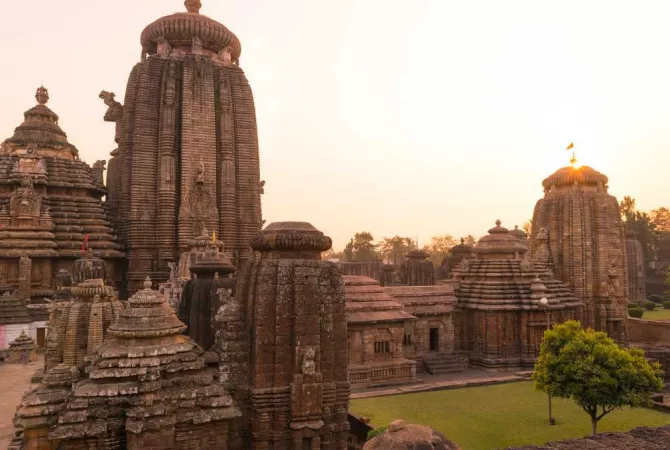 View Gallery - 11
View Gallery - 11 Lingaraj Temple is a Hindu temple considered to be the largest and oldest temple in Bhubaneswar. It is the most prominent of the temples in Bhubaneswar and is one of the holiest temples in India. The temple, which honors the Hindu deity Shiva, is thought to have been built around the seventh century CE.
The temple is colossal and has been constructed in the Kalinga style of architecture. The temple has a 60-meter-high (200-foot-high) shikhara, or tower, and is spread over an area of 6,000 square metres (64,580 square feet). There are several smaller shrines throughout the temple, one of which is devoted to the goddess Parvati. A shikhara (spire), a mandapa (porch), and a garbhagriha (sanctum sanctorum) are features of the temple. The walls of the temple are adorned with carvings of gods and goddesses.
The temple is a popular pilgrimage destination and is visited by millions of Hindus every year.
Places to visit in Bhubaneswar
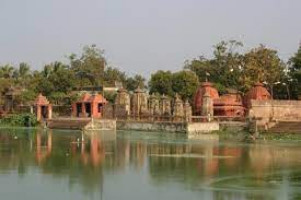
Bindu Sarovara
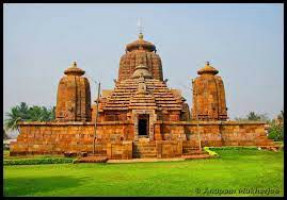
Brahmeshwara Temple
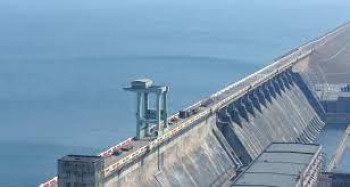
Hirakud Dam
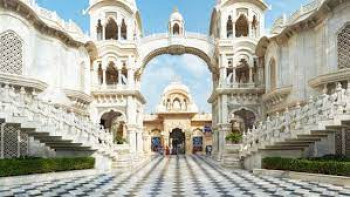
Iskcon Temple
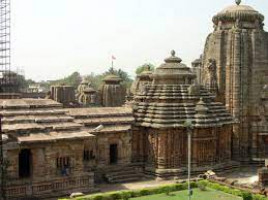
Lingaraj Temple
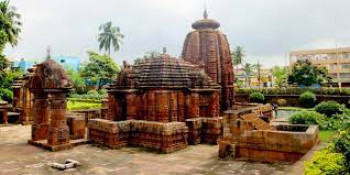
Mukteswara Temple
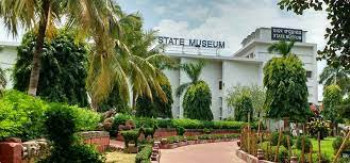
Orissa State Museum
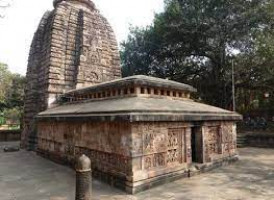
Parasurameswara Temple
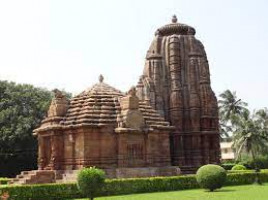
Raja Rani Temple
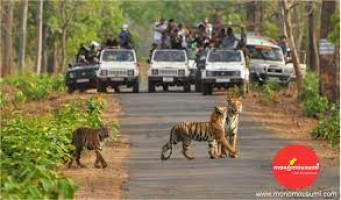
Tikarpada Wildlife Sanctuary
Per Person
14,998
*EXCLUDING APPLICABLE TAXES 4.9 Ratings
( 185 Reviews )
( 185 Reviews )
Per Person
18,499
*EXCLUDING APPLICABLE TAXES 4.3 Ratings
( 218 Reviews )
( 218 Reviews )
Per Person
15,840
*EXCLUDING APPLICABLE TAXES 4.9 Ratings
( 200 Reviews )
( 200 Reviews )
Per Person
6,500
*EXCLUDING APPLICABLE TAXES 5.0 Ratings
( 47 Reviews )
( 47 Reviews )
Per Person
9,500
*EXCLUDING APPLICABLE TAXES 5.0 Ratings
( 47 Reviews )
( 47 Reviews )
Total
30,000
*EXCLUDING APPLICABLE TAXES 5.0 Ratings
( 1 Reviews )
( 1 Reviews )
Per Person
12,000
*EXCLUDING APPLICABLE TAXES 4.3 Ratings
( 218 Reviews )
( 218 Reviews )
Per Person
9,500
*EXCLUDING APPLICABLE TAXES 4.9 Ratings
( 200 Reviews )
( 200 Reviews )
Per Person
11,000
*EXCLUDING APPLICABLE TAXES 5.0 Ratings
( 157 Reviews )
( 157 Reviews )
Per Person
9,500
*EXCLUDING APPLICABLE TAXES Explore the Udayagiri and Khandagiri Caves
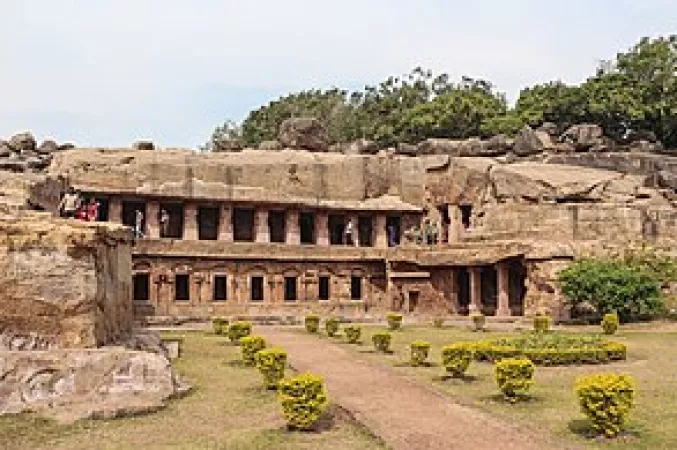 View Gallery - 11
View Gallery - 11 The Udayagiri and Khandagiri Caves are located in Bhubaneswar, around 18 km from the city center. The hills are limestone formations, and the caves are cut out of the hills. The caves are believed to have been carved out in the 2nd century B.C. The caves were used by Jain monks as a place of meditation and retreat. The caves are also associated with the Indian Emperor Ashoka, who is said to have visited the caves in the 3rd century BC.
The Udayagiri and Khandagiri Caves are a complex of caves located in Bhubaneswar. The caves are carved out of the hills of Udayagiri and Khandagiri and are a popular tourist attraction. The caves are said to have been carved out in the 2nd century BC by Jain monks. The caves are divided into two groups: the Udayagiri Caves and the Khandagiri Caves. The Udayagiri Caves are located on Udayagiri Hill and are numbered 1 to 12. The Khandagiri Caves are located on Khandagiri Hill and are numbered 1 to 15.
The caves are a popular tourist attraction and a UNESCO World Heritage Site.
Places to visit in Bhubaneswar
Per Person
14,998
*EXCLUDING APPLICABLE TAXES 4.9 Ratings
( 185 Reviews )
( 185 Reviews )
Per Person
18,499
*EXCLUDING APPLICABLE TAXES 4.3 Ratings
( 218 Reviews )
( 218 Reviews )
Per Person
15,840
*EXCLUDING APPLICABLE TAXES 4.9 Ratings
( 200 Reviews )
( 200 Reviews )
Per Person
6,500
*EXCLUDING APPLICABLE TAXES 5.0 Ratings
( 47 Reviews )
( 47 Reviews )
Per Person
9,500
*EXCLUDING APPLICABLE TAXES 5.0 Ratings
( 47 Reviews )
( 47 Reviews )
Total
30,000
*EXCLUDING APPLICABLE TAXES 5.0 Ratings
( 1 Reviews )
( 1 Reviews )
Per Person
12,000
*EXCLUDING APPLICABLE TAXES 4.3 Ratings
( 218 Reviews )
( 218 Reviews )
Per Person
9,500
*EXCLUDING APPLICABLE TAXES 4.9 Ratings
( 200 Reviews )
( 200 Reviews )
Per Person
11,000
*EXCLUDING APPLICABLE TAXES 5.0 Ratings
( 157 Reviews )
( 157 Reviews )
Per Person
9,500
*EXCLUDING APPLICABLE TAXES Get spiritual at Mukteswara Temple
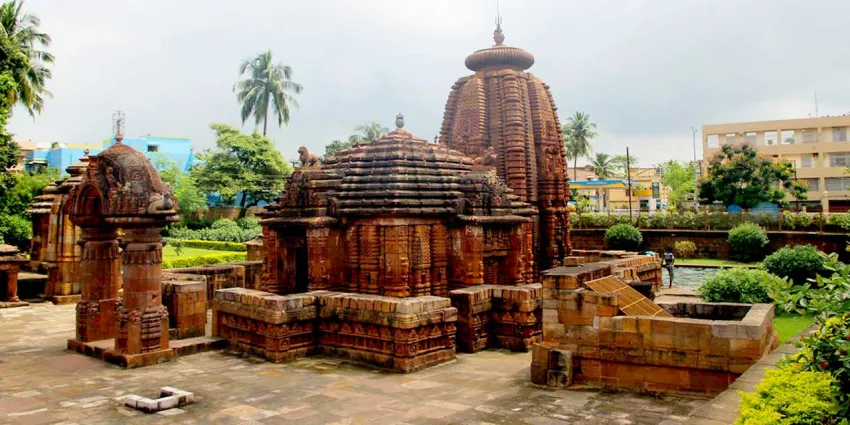 View Gallery - 11
View Gallery - 11 The Mukteswara Temple, located in Bhubaneswar, is dedicated to Lord Shiva and is one of the most popular temples in the city. The temple was built in the 10th century AD by the Somavamsi king Yayati I. The temple is one of the oldest temples in the city and a major tourist attraction. The temple is a part of the Kalinga architectural style and is noted for its ornate carvings. It is dedicated to the Hindu god Shiva and located in the Khandagiri hills, where it is surrounded by beautiful natural scenery. The temple is a popular tourist destination and is visited by hundreds of visitors every year.
Places to visit in Bhubaneswar
Per Person
14,998
*EXCLUDING APPLICABLE TAXES 4.9 Ratings
( 185 Reviews )
( 185 Reviews )
Per Person
18,499
*EXCLUDING APPLICABLE TAXES 4.3 Ratings
( 218 Reviews )
( 218 Reviews )
Per Person
15,840
*EXCLUDING APPLICABLE TAXES 4.9 Ratings
( 200 Reviews )
( 200 Reviews )
Per Person
6,500
*EXCLUDING APPLICABLE TAXES 5.0 Ratings
( 47 Reviews )
( 47 Reviews )
Per Person
9,500
*EXCLUDING APPLICABLE TAXES 5.0 Ratings
( 47 Reviews )
( 47 Reviews )
Total
30,000
*EXCLUDING APPLICABLE TAXES 5.0 Ratings
( 1 Reviews )
( 1 Reviews )
Per Person
12,000
*EXCLUDING APPLICABLE TAXES 4.3 Ratings
( 218 Reviews )
( 218 Reviews )
Per Person
9,500
*EXCLUDING APPLICABLE TAXES 4.9 Ratings
( 200 Reviews )
( 200 Reviews )
Per Person
11,000
*EXCLUDING APPLICABLE TAXES 5.0 Ratings
( 157 Reviews )
( 157 Reviews )
Per Person
9,500
*EXCLUDING APPLICABLE TAXES Spend a day at the Nandankanan Zoological Park
 View Gallery - 11
View Gallery - 11 Nandankanan Zoological Park is a major zoo and botanical garden in Bhubaneswar, considered to be one of the largest zoos in India, spread over an area of 404 hectares (1,000 acres). The zoo was founded in 1959 by Dr. Kamalakanta Mishra, the then Joint Director of Veterinary Services for the state of Odisha. The zoo was opened to the public on January 9, 1960. It is home to about 1,500 animals, including white tigers, lions, elephants, deer, and birds.
The zoo is also a member of the World Association of Zoos and Aquariums (WAZA). It has a number of exhibits, including a lion and tiger safari, a leopard exhibit, a deer park, and a bird park. The zoo has also been successful in breeding a number of endangered species, including Indian rhinoceros, Asiatic lions, and white tigers.
Places to visit in Bhubaneswar
Per Person
14,998
*EXCLUDING APPLICABLE TAXES 4.9 Ratings
( 185 Reviews )
( 185 Reviews )
Per Person
18,499
*EXCLUDING APPLICABLE TAXES 4.3 Ratings
( 218 Reviews )
( 218 Reviews )
Per Person
15,840
*EXCLUDING APPLICABLE TAXES 4.9 Ratings
( 200 Reviews )
( 200 Reviews )
Per Person
6,500
*EXCLUDING APPLICABLE TAXES 5.0 Ratings
( 47 Reviews )
( 47 Reviews )
Per Person
9,500
*EXCLUDING APPLICABLE TAXES 5.0 Ratings
( 47 Reviews )
( 47 Reviews )
Total
30,000
*EXCLUDING APPLICABLE TAXES 5.0 Ratings
( 1 Reviews )
( 1 Reviews )
Per Person
12,000
*EXCLUDING APPLICABLE TAXES 4.3 Ratings
( 218 Reviews )
( 218 Reviews )
Per Person
9,500
*EXCLUDING APPLICABLE TAXES 4.9 Ratings
( 200 Reviews )
( 200 Reviews )
Per Person
11,000
*EXCLUDING APPLICABLE TAXES 5.0 Ratings
( 157 Reviews )
( 157 Reviews )
Per Person
9,500
*EXCLUDING APPLICABLE TAXES Glorify the popular Parsurameswara Temple
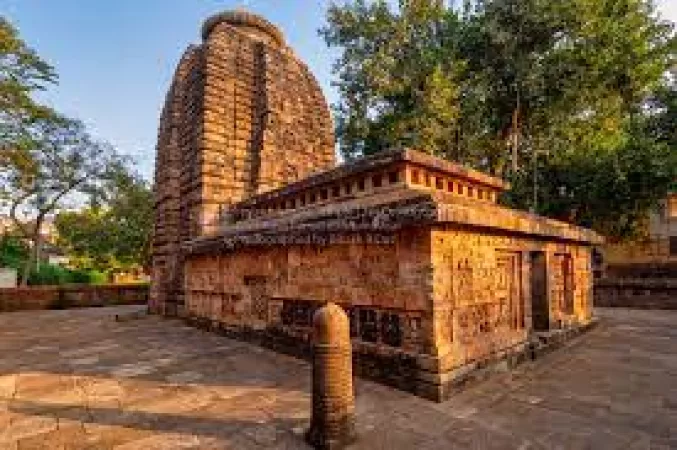 View Gallery - 11
View Gallery - 11 The Parsurameswara temple is one of the most famous temples in Bhubaneswar, built by the Eastern Ganga dynasty king, Anantavarman Chodaganga, in the 11th century. The temple is dedicated to the Hindu god Shiva and is a triple-sanctum temple with a free-standing Lingam in the central sanctum.
The temple is surrounded by a compound wall. The temple has a porch in front of the sanctum, supported by four pillars. The pillars are further decorated with sculptures of animals and deities. The temple has a shikhara (tower) over the sanctum. The temple is also surrounded by a compound wall and has a number of subsidiary shrines. The temple is notable for its exquisite carvings, which include a number of erotic sculptures.
Places to visit in Bhubaneswar
Per Person
14,998
*EXCLUDING APPLICABLE TAXES 4.9 Ratings
( 185 Reviews )
( 185 Reviews )
Per Person
18,499
*EXCLUDING APPLICABLE TAXES 4.3 Ratings
( 218 Reviews )
( 218 Reviews )
Per Person
15,840
*EXCLUDING APPLICABLE TAXES 4.9 Ratings
( 200 Reviews )
( 200 Reviews )
Per Person
6,500
*EXCLUDING APPLICABLE TAXES 5.0 Ratings
( 47 Reviews )
( 47 Reviews )
Per Person
9,500
*EXCLUDING APPLICABLE TAXES 5.0 Ratings
( 47 Reviews )
( 47 Reviews )
Total
30,000
*EXCLUDING APPLICABLE TAXES 5.0 Ratings
( 1 Reviews )
( 1 Reviews )
Per Person
12,000
*EXCLUDING APPLICABLE TAXES 4.3 Ratings
( 218 Reviews )
( 218 Reviews )
Per Person
9,500
*EXCLUDING APPLICABLE TAXES 4.9 Ratings
( 200 Reviews )
( 200 Reviews )
Per Person
11,000
*EXCLUDING APPLICABLE TAXES 5.0 Ratings
( 157 Reviews )
( 157 Reviews )
Per Person
9,500
*EXCLUDING APPLICABLE TAXES Explore the Dhauli Giri
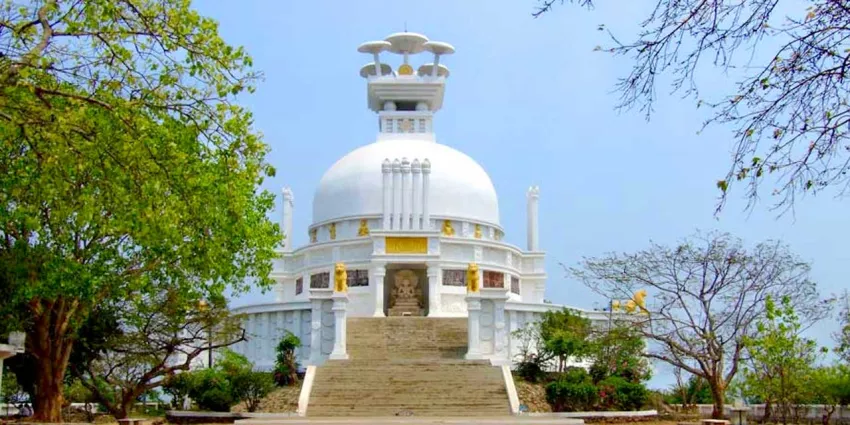 View Gallery - 11
View Gallery - 11 The Dhauli Giri hills, located in the Bhubaneswar district of Odisha, are a major tourist attraction in Bhubaneswar. The history of the Dhauli Giri hills is associated with the Kalinga War. The Kalinga War was fought between the Mauryan Empire and the Kalinga kingdom, and Ashoka, the Mauryan Emperor, was the victor. As a result of the Kalinga War, Ashoka underwent a change in his thinking and became a pacifist. He renounced violence and became a follower of Buddhism. As a symbol of his new thinking, Ashoka erected a number of pillars with inscriptions throughout his empire. The Dhauli Giri hills are home to one of the most famous Ashoka pillars. The pillar has an inscription that records the victory of Ashoka over the Kalinga kingdom.
Places to visit in Bhubaneswar
Per Person
14,998
*EXCLUDING APPLICABLE TAXES 4.9 Ratings
( 185 Reviews )
( 185 Reviews )
Per Person
18,499
*EXCLUDING APPLICABLE TAXES 4.3 Ratings
( 218 Reviews )
( 218 Reviews )
Per Person
15,840
*EXCLUDING APPLICABLE TAXES 4.9 Ratings
( 200 Reviews )
( 200 Reviews )
Per Person
6,500
*EXCLUDING APPLICABLE TAXES 5.0 Ratings
( 47 Reviews )
( 47 Reviews )
Per Person
9,500
*EXCLUDING APPLICABLE TAXES 5.0 Ratings
( 47 Reviews )
( 47 Reviews )
Total
30,000
*EXCLUDING APPLICABLE TAXES 5.0 Ratings
( 1 Reviews )
( 1 Reviews )
Per Person
12,000
*EXCLUDING APPLICABLE TAXES 4.3 Ratings
( 218 Reviews )
( 218 Reviews )
Per Person
9,500
*EXCLUDING APPLICABLE TAXES 4.9 Ratings
( 200 Reviews )
( 200 Reviews )
Per Person
11,000
*EXCLUDING APPLICABLE TAXES 5.0 Ratings
( 157 Reviews )
( 157 Reviews )
Per Person
9,500
*EXCLUDING APPLICABLE TAXES Visit the Odisha State Museum
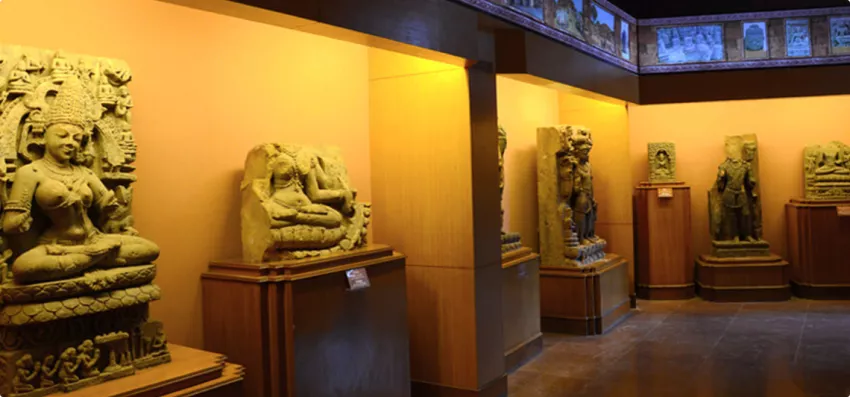 View Gallery - 11
View Gallery - 11 The Odisha State Museum in Bhubaneswar is a museum that was founded in 1952 and is located in the Odisha State Secretariat. The museum has a collection of over 200,000 objects, including paintings, sculptures, handicrafts, coins, manuscripts, and archaeological artifacts. The museum is divided into two wings: the art wing and the history wing.
The art wing has a collection of paintings and sculptures from the 10th to the 19th centuries. The history wing has a collection of archaeological artifacts from the 2nd century BC to the 19th century AD.
The museum is open from Tuesday to Saturday, 10:00 a.m. to 5:00 p.m., and closed on Sundays and Mondays.
Places to visit in Bhubaneswar
Per Person
14,998
*EXCLUDING APPLICABLE TAXES 4.9 Ratings
( 185 Reviews )
( 185 Reviews )
Per Person
18,499
*EXCLUDING APPLICABLE TAXES 4.3 Ratings
( 218 Reviews )
( 218 Reviews )
Per Person
15,840
*EXCLUDING APPLICABLE TAXES 4.9 Ratings
( 200 Reviews )
( 200 Reviews )
Per Person
6,500
*EXCLUDING APPLICABLE TAXES 5.0 Ratings
( 47 Reviews )
( 47 Reviews )
Per Person
9,500
*EXCLUDING APPLICABLE TAXES 5.0 Ratings
( 47 Reviews )
( 47 Reviews )
Total
30,000
*EXCLUDING APPLICABLE TAXES 5.0 Ratings
( 1 Reviews )
( 1 Reviews )
Per Person
12,000
*EXCLUDING APPLICABLE TAXES 4.3 Ratings
( 218 Reviews )
( 218 Reviews )
Per Person
9,500
*EXCLUDING APPLICABLE TAXES 4.9 Ratings
( 200 Reviews )
( 200 Reviews )
Per Person
11,000
*EXCLUDING APPLICABLE TAXES 5.0 Ratings
( 157 Reviews )
( 157 Reviews )
Per Person
9,500
*EXCLUDING APPLICABLE TAXES Observe the minutes of Rajarani Temple
 View Gallery - 11
View Gallery - 11 A UNESCO World Heritage Site, the Rajarani Temple is an 11th-century temple dedicated to the Hindu god Shiva located in the city of Bhubaneswar in the Indian state of Odisha. The temple is also known as the "Queen of the Temples" and is considered one of the finest examples of Kalinga architecture. The temple is built in the form of a chariot with wheels carved into the base and is decorated with intricate carvings of gods, goddesses, and animals. The temple is also noted for its erotic sculptures, which are said to be the most erotic in all of India. The temple is dedicated to the Hindu god Radha, is built in the shape of a pyramid, and is decorated with intricate carvings and sculptures.
Places to visit in Bhubaneswar
Per Person
14,998
*EXCLUDING APPLICABLE TAXES 4.9 Ratings
( 185 Reviews )
( 185 Reviews )
Per Person
18,499
*EXCLUDING APPLICABLE TAXES 4.3 Ratings
( 218 Reviews )
( 218 Reviews )
Per Person
15,840
*EXCLUDING APPLICABLE TAXES 4.9 Ratings
( 200 Reviews )
( 200 Reviews )
Per Person
6,500
*EXCLUDING APPLICABLE TAXES 5.0 Ratings
( 47 Reviews )
( 47 Reviews )
Per Person
9,500
*EXCLUDING APPLICABLE TAXES 5.0 Ratings
( 47 Reviews )
( 47 Reviews )
Total
30,000
*EXCLUDING APPLICABLE TAXES 5.0 Ratings
( 1 Reviews )
( 1 Reviews )
Per Person
12,000
*EXCLUDING APPLICABLE TAXES 4.3 Ratings
( 218 Reviews )
( 218 Reviews )
Per Person
9,500
*EXCLUDING APPLICABLE TAXES 4.9 Ratings
( 200 Reviews )
( 200 Reviews )
Per Person
11,000
*EXCLUDING APPLICABLE TAXES 5.0 Ratings
( 157 Reviews )
( 157 Reviews )
Per Person
9,500
*EXCLUDING APPLICABLE TAXES Educate yourself at the Pathani Samanta Planetarium
 View Gallery - 11
View Gallery - 11 Pathani Samanta Planetarium, a public planetarium located in Bhubaneswar, is a popular tourist destination in the state. The planetarium was inaugurated by the then Chief Minister of Odisha, Naveen Patnaik, on November 8, 2007. It is the second-largest planetarium in India after the Nehru Planetarium in Mumbai. The planetarium has a dome diameter of 27.5 metres (90 feet) and a seating capacity of 350 people. It is equipped with a Spitz A3P digital projector and a full-dome video system. The planetarium offers multimedia shows on astronomy and space science.
The planetarium is named after the eminent Indian astronomer and scientist Pathani Samanta. The planetarium offers an excellent view of the night sky and its various constellations. It is also a great place for stargazing. The planetarium is equipped with a high-tech projection system that displays the night sky in all its glory. Visitors can also avail themselves of the facility of renting telescopes to get a closer look at the stars. The planetarium also organises various sky shows and educational programmes for school children.
Places to visit in Bhubaneswar
Per Person
14,998
*EXCLUDING APPLICABLE TAXES 4.9 Ratings
( 185 Reviews )
( 185 Reviews )
Per Person
18,499
*EXCLUDING APPLICABLE TAXES 4.3 Ratings
( 218 Reviews )
( 218 Reviews )
Per Person
15,840
*EXCLUDING APPLICABLE TAXES 4.9 Ratings
( 200 Reviews )
( 200 Reviews )
Per Person
6,500
*EXCLUDING APPLICABLE TAXES 5.0 Ratings
( 47 Reviews )
( 47 Reviews )
Per Person
9,500
*EXCLUDING APPLICABLE TAXES 5.0 Ratings
( 47 Reviews )
( 47 Reviews )
Total
30,000
*EXCLUDING APPLICABLE TAXES 5.0 Ratings
( 1 Reviews )
( 1 Reviews )
Per Person
12,000
*EXCLUDING APPLICABLE TAXES 4.3 Ratings
( 218 Reviews )
( 218 Reviews )
Per Person
9,500
*EXCLUDING APPLICABLE TAXES 4.9 Ratings
( 200 Reviews )
( 200 Reviews )
Per Person
11,000
*EXCLUDING APPLICABLE TAXES 5.0 Ratings
( 157 Reviews )
( 157 Reviews )
Per Person
9,500
*EXCLUDING APPLICABLE TAXES Food and shopping in Bhubaneshwar
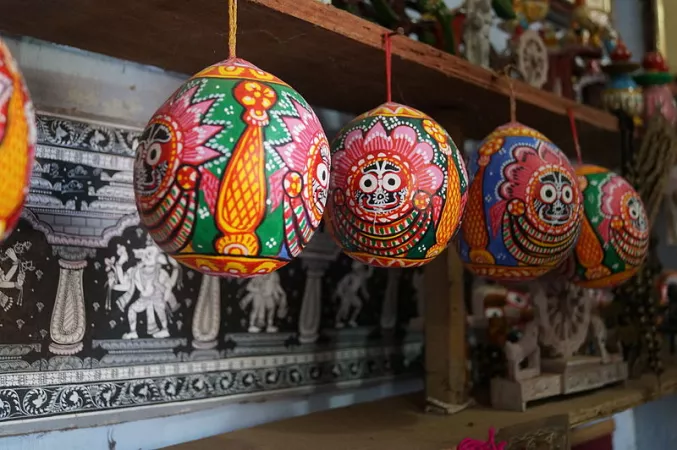 View Gallery - 11
View Gallery - 11 Indulging in food culture and treating yourself to some shopping is a fine way to cap off any trip after you have explored the city, though. Not to mention, there are a few popular food items in Bhubaneswar. One of the most popular food items is "dalma," which is a dish made of lentils and vegetables. Another widely consumed food item is "pitha," a sweet pancake made from rice flour and coconut milk. There are a variety of street foods available in Bhubaneswar. Some of the most popular ones include:
• Puri Sabji: This is a dish made of puri (a type of Indian flatbread) and sabji (a type of vegetable curry).
• Paneer pakoda: This is a dish made of paneer (a type of Indian cheese) and chickpea flour batter.
• Dal Pakoda: This is a dish made of lentils and chickpea flour batter.
• Samosa: This is a dish made of potato and pea stuffing inside a triangle of pastry.
• Chole Bhature: This is a dish made of chole (a type of chickpea curry) and bhature (a type of Indian flatbread).
• Tikki: This is a dish made of potato and pea stuffing inside a round pastry.
• Chana Bhatura: This is a dish made of chana (a type of chickpea curry) and bhatura (a type of Indian flatbread).
After filling up on Bhubaneswar's cuisine, it's time for some retail therapy. The Janata Market, the biggest market in Bhubaneshwar, is a fantastic location to find regional crafts and gifts. Additionally, there are numerous clothing and jewelry stores in the market. The Infocity Mall is the city's largest mall and is home to a number of high-end international brands. Other popular malls in the city include the Big Bazaar, the Gopala Towers Mall, and the SuperMarket.
Places to visit in Bhubaneswar
Per Person
14,998
*EXCLUDING APPLICABLE TAXES 4.9 Ratings
( 185 Reviews )
( 185 Reviews )
Per Person
18,499
*EXCLUDING APPLICABLE TAXES 4.3 Ratings
( 218 Reviews )
( 218 Reviews )
Per Person
15,840
*EXCLUDING APPLICABLE TAXES 4.9 Ratings
( 200 Reviews )
( 200 Reviews )
Per Person
6,500
*EXCLUDING APPLICABLE TAXES 5.0 Ratings
( 47 Reviews )
( 47 Reviews )
Per Person
9,500
*EXCLUDING APPLICABLE TAXES 5.0 Ratings
( 47 Reviews )
( 47 Reviews )
Total
30,000
*EXCLUDING APPLICABLE TAXES 5.0 Ratings
( 1 Reviews )
( 1 Reviews )
Per Person
12,000
*EXCLUDING APPLICABLE TAXES 4.3 Ratings
( 218 Reviews )
( 218 Reviews )
Per Person
9,500
*EXCLUDING APPLICABLE TAXES 4.9 Ratings
( 200 Reviews )
( 200 Reviews )
Per Person
11,000
*EXCLUDING APPLICABLE TAXES 5.0 Ratings
( 157 Reviews )
( 157 Reviews )
Per Person
9,500
*EXCLUDING APPLICABLE TAXES 
Suchismita Das
Suchismita is a PR Professional since 2018. She have worked in PR with a diverse set of clients.
She has completed her Post Graduation in M.Sc. in Media Science from Maulana Abul Kalam Azad University of Technology (MAKAUT). She completed her graduation in English Honours from Kalyani University.
In her free time, she loves sketching and painting, writing creative pieces, crafting DIY objects and binge watching her favourite shows
Explore best popularTour Packages
Tripclap connects you with top travel agents
Compare Custom Quotes and get the best package deal
1
Trusted Network Of 8000+ Agents.
2
Book everything together, including stay & transport.
3
Compare agent profiles & verified reviews.
How It Works
Compare Custom Quotes from Top Travel Agents.

Tell us about your trip

Get Custom quotes from top agents.

Choose the package you like
Latest Destinations : -
• Aihole • Raub • Thanjavur • Varanasi • Labuan • Auroville • Munnar • Koh Lanta • Sivasagar • Haiphong • Saiha • Bintulu • Dhauli • Girnar • Ipoh • Netarhat • Parwanoo • Madhubani • Kuala Lumpur • Vaishno • Chamoli • Hemis • Gandikota • Cooch Behar • Ben Tre • Teluk Bahang • Dwarka • Matheran • Nuh • Malshej • Mysore • Koh Samet • Bhandardara • Split • Karnaprayag • Chikmagalur • Bharatpur • Bhowali • Kon Tum • Hoa Binh • Bhamragarh Wildlife Sanctuary • Dang • Harihareshwar • Pune • Sravanabelagola • Gabala • Pasighat • Shoghi • Bomdila • Machilipatnam
• Aihole • Raub • Thanjavur • Varanasi • Labuan • Auroville • Munnar • Koh Lanta • Sivasagar • Haiphong • Saiha • Bintulu • Dhauli • Girnar • Ipoh • Netarhat • Parwanoo • Madhubani • Kuala Lumpur • Vaishno • Chamoli • Hemis • Gandikota • Cooch Behar • Ben Tre • Teluk Bahang • Dwarka • Matheran • Nuh • Malshej • Mysore • Koh Samet • Bhandardara • Split • Karnaprayag • Chikmagalur • Bharatpur • Bhowali • Kon Tum • Hoa Binh • Bhamragarh Wildlife Sanctuary • Dang • Harihareshwar • Pune • Sravanabelagola • Gabala • Pasighat • Shoghi • Bomdila • Machilipatnam
Best Selling Domestic Tour Packages : -
Kashmir Tour Packages Andaman Tour Packages Kerala Tour Packages Shimla Tour Packages Manali Tour Packages Sikkim Tour Packages Uttarakhand Tour Packages Rajasthan Tour Packages Chardham Tour Packages Gujarat Tour Packages Rameswaram Tour Packages Gangtok Tour Packages Goa Tour Packages Jaipur Tour Packages Ooty Tour Packages Jim Corbett Tour Packages Mussoorie Tour Packages Kanyakumari Tour Packages Meghalaya Tour Packages Ladakh Tour Packages
Kashmir Tour Packages Andaman Tour Packages Kerala Tour Packages Shimla Tour Packages Manali Tour Packages Sikkim Tour Packages Uttarakhand Tour Packages Rajasthan Tour Packages Chardham Tour Packages Gujarat Tour Packages Rameswaram Tour Packages Gangtok Tour Packages Goa Tour Packages Jaipur Tour Packages Ooty Tour Packages Jim Corbett Tour Packages Mussoorie Tour Packages Kanyakumari Tour Packages Meghalaya Tour Packages Ladakh Tour Packages
Best Selling International Tour Packages : -
Dubai Tour Packages Bali Tour Packages Singapore Tour Packages Thailand Tour Packages Maldives Tour Packages Bhutan Tour Packages Vietnam Tour Packages Mauritius Tour Packages Nepal Tour Packages Europe Tour Packages Sri lanka Tour Packages Turkey Tour Packages Malaysia Tour Packages Azerbaijan Tour Packages
Dubai Tour Packages Bali Tour Packages Singapore Tour Packages Thailand Tour Packages Maldives Tour Packages Bhutan Tour Packages Vietnam Tour Packages Mauritius Tour Packages Nepal Tour Packages Europe Tour Packages Sri lanka Tour Packages Turkey Tour Packages Malaysia Tour Packages Azerbaijan Tour Packages
Certified
We accept (more)
Members of
Media Recognition
Trusted Partners
Award
Copyrights © TripClap. All Rights Reserved


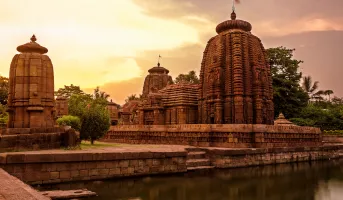
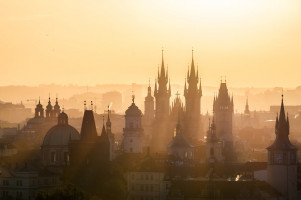
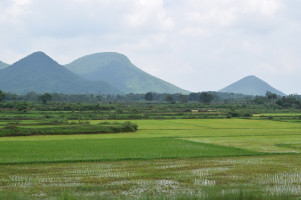
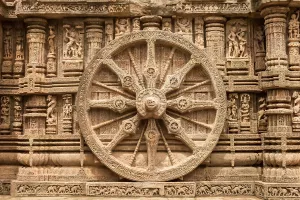
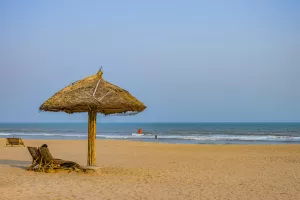

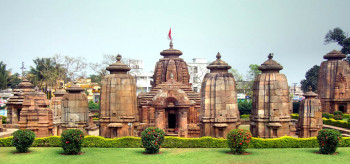
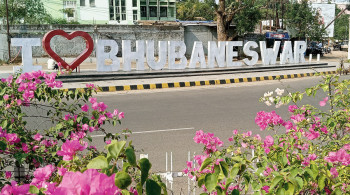

 May
May June
June July
July August
August September
September October
October November
November December
December January
January February
February March
March April
April
